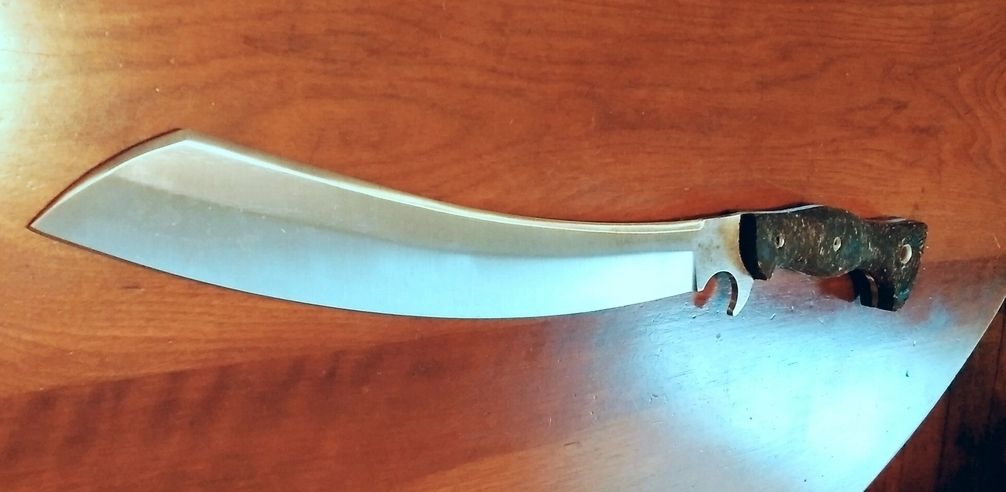- Joined
- Nov 20, 2005
- Messages
- 19,385
The List:
Baryonyx Machete (unfortunately not available)
Condor 14" Eco Survivor (No Experience, but I hear it is good.) I would choose another handle type and hence different machete.
Condor 15" Bolo (Might be an excellent choice)
Condor Bushcraft Parang. (Very good and similar to my Village Parang.)
TOPS .170 (probably out of my price range)
Svord Kiwi (No experience)
Ontario 12" Cutlass Machete (okay, but the Condor choices are better in my opinion.)
Condor Pack Golok (Used this one a lot and like it. It is a matter of choice between the Parang shape and more rounded lest pointy shape.)
I would add the Duku Parang or Mini Duku Parang to my choices. The longer blade may seem like it would be ungainly in the woods, but you probably won't notice much difference between the Village or Bushcraft Parang as far as carry goes. One point that I think could be useful is the sheath of the Duku Parang is a traditional leather machete sheath and as a result easy to pull the blade or versus using the snaps on the other ones. You have to watch that you don't cut the sheath or yourself putting the ones back into the sheath that have the snaps.
Baryonyx Machete (unfortunately not available)
Condor 14" Eco Survivor (No Experience, but I hear it is good.) I would choose another handle type and hence different machete.
Condor 15" Bolo (Might be an excellent choice)
Condor Bushcraft Parang. (Very good and similar to my Village Parang.)
TOPS .170 (probably out of my price range)
Svord Kiwi (No experience)
Ontario 12" Cutlass Machete (okay, but the Condor choices are better in my opinion.)
Condor Pack Golok (Used this one a lot and like it. It is a matter of choice between the Parang shape and more rounded lest pointy shape.)
I would add the Duku Parang or Mini Duku Parang to my choices. The longer blade may seem like it would be ungainly in the woods, but you probably won't notice much difference between the Village or Bushcraft Parang as far as carry goes. One point that I think could be useful is the sheath of the Duku Parang is a traditional leather machete sheath and as a result easy to pull the blade or versus using the snaps on the other ones. You have to watch that you don't cut the sheath or yourself putting the ones back into the sheath that have the snaps.


